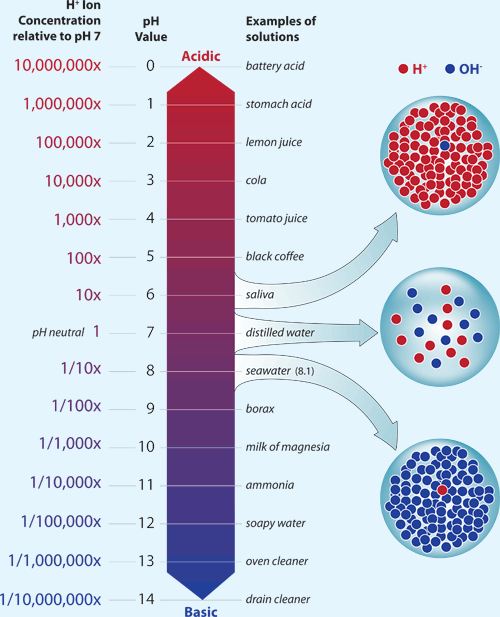Question #ab4a2
1 Answer
Explanation:
The pH of a solution is nothing more than a measure of its concentration of hydrogen ions,
More specifically, the pH of a solution is calculated by taking the negative log base
#color(blue)(|bar(ul(color(white)(a/a)"pH" = - log(["H"^(+)])color(white)(a/a)|)))#
The problem already provides you with the concentration of hydrogen ions, so plug this into the equation to find
#"pH" = - log(1.7 * 10^(-5)) = color(green)(|bar(ul(color(white)(a/a)4.77color(white)(a/a)|)))#
Notice that because the pH is calculated using a negative log, a higher concentration of hydrogen ions will result in a lower pH.
In fact, the pH of pure water at room temperature is equal to
#["H"^(+)]_"pure water" = 1.0 * 10^(-7)"M" " "# and#" "["OH"^(-)]_"pure water" = 1.0 * 10^(-7)"M"#
Your solution has a higher concentration of hydrogen ions, which is why the pH if lower than


